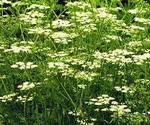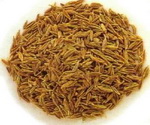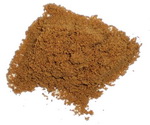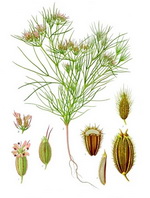|
Cumin – The Complement To Other Spices


Cumin is a member of the Apiaceae family also known as the parsley family. The plant is a delicate looking annual with blue green frond like leaves and tiny white or pink flowers, the fruits of the plant are the cumin seeds. The plant has an aroma that is pungent with a hint of peppermint. There is a plant that produces brown seeds and one that produces black seeds.
Origin The plant is native to the Middle East, also popular in India, North Africa, Western and Central Asia, Latin America and Spain.
History The plant was widely known in the ancient world in such areas as Egypt where it has been found in the tombs of the pharaohs and was used in the process of embalming as a forerunner to later spices such as cloves and cinnamon. The spice is so well known in antiquity that it was even mentioned in the Hebrew/Aramaic and Christian Greek Scriptures of the Bible. The plant was known by the Romans and figured in their superstitions, as well as in the superstitions of England and Germany. The spice spread to the Americas with the Spaniards and made their way into many South American dishes. Now grown predominantly in Iran, it is stated that this country produces the best quality green seed. Other major growers are India, Morocco and Turkey. Buying/Storage This pungent spice loses its potency after grinding. The whole seeds will retain their potency for up to three years and the ground spice for up to one year with proper storage in airtight packages away from extremes of light, heat, and humidity. Use The spice is popular in Indian dishes such as curries, rice and vegetables, breads, for making pickles and chutneys. The spice is also popular in Middle Eastern dishes such as those made with lamb. The spice also complements vegetables such as carrots and squash.
For some great sections on herbs and spices some great references are: • The Spice and Herb Bible – Second Edition by Ian Hemphill with recipes by Kate Hemphill • The Food Encyclopedia by Jacques L. Rolland and Carol Sherman with other contributors
Cooking Basics
|
Cumin Botanical Cycle

Parsley Family
Aniseed
Caraway
Celery Seed
Coriander
Cumin
Dill
Fennel
Parsley





